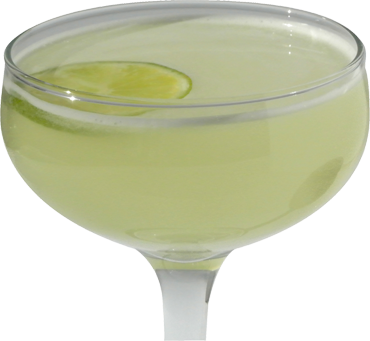The daiquiri, margarita, the sidecar; what do all of these classic cocktails have in common? Besides being staples in your cocktail rotation (because they are, right?), they are all sours. Let's take a look at what makes a sour a sour.
Three essential ingredients
 Because this build prominently features an acid component, sour cocktails are typically bright and tart in profile, hence their name. The addition of sugar lends balance to the otherwise bracing flavors that accompany booze and acid.
Because this build prominently features an acid component, sour cocktails are typically bright and tart in profile, hence their name. The addition of sugar lends balance to the otherwise bracing flavors that accompany booze and acid.
The basic sour build can result in countless cocktails, and in fact the sour is one of the most fundamental blueprints in mixology.
The idea is that the base spirit establishes the direction that the flavors of the cocktail are going to pursue. As an example, a gin sour will be radically different in flavor and aromatic structure from a whiskey sour, but both utilize the same basic build to achieve their utter balance.
The versatility of the sour means that not only are riffs and iterations of the sour among the most common cocktails found on bar menus, but that the sour is the most useful and valuable cocktail build for the home bartender.
Preferred sour recipe
Shake all ingredients with ice and strain into a chilled coupe.
Why the ranges for the acid and sweetener? Quite simply, some citrus is more acidic than others, and some sweeteners are sweeter than others. Balancing acid and sugar is the hallmark of any sour cocktail, so keep in mind that lime has more acid than lemon, and far more than orange. Similarly, our gum syrup is sweeter than our grenadine. So, if we were doing a sour using orange and grenadine, we'd opt for 3/4 oz. of orange juice, and 1/2 oz. of grenadine. A sour cocktail featuring key lime and gum syrup would call for 2/3 oz. juice and only 1/3 oz. of syrup.
Knowing the acid and sugar content of your ingredients is key when making cocktails!
Learn while drinking
In exploring the sour at home, we recommend first trying out some staple recipes like the daiquiri or Jack Rose. This will familiarize the palette with the relationships of the different elements at play in sours. Try isolating each flavor component in the drink and considering it on its own. What exactly is the base spirit bringing to the table? What is the relationship between the acid and the spirit? All of these considerations are part of experiencing the cocktail actively. After a few practices (lucky you, that means a few cocktails) you should become familiar with what each element of the drink is bringing to the party.
Speaking of parties, get some friends together and host a sour cocktail tasting! The beauty of exploring classic cocktail build like the sour is that there is something to be learned by everyone. It doesn't matter if you're a seasoned bartender comparing the merits of different rhum agricoles in a daquiri, or a novice home mixologist, expanding your knowledge of cocktail fundamentals is always valuable (and fun, too).
